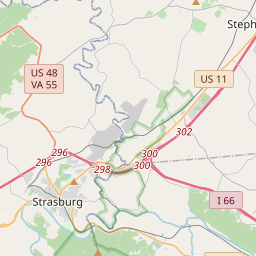Civil War Strasburg
Historical marker location:






Strategic Intersection
April 12, 1861: The Civil War begins with the Confederate attack on Fort Sumter, located in South Carolina's Charleston Harbor.
April 15, 1861: President Abraham Lincoln issues a call for 75,000 volunteers to serve in the Union Army to suppress the rebellion.
May 24, 1861: The first major land battle, known as the First Battle of Bull Run (or First Battle of Manassas), takes place in Virginia. It ends in Confederate victory.
September 17, 1862: The Battle of Antietam in Maryland becomes the bloodiest single-day battle in American history, with heavy casualties on both sides. The Union forces, commanded by General George McClellan, manage to halt Confederate General Robert E. Lee's advance into Union territory.
January 1, 1863: President Lincoln issues the Emancipation Proclamation, declaring that all slaves in Confederate-held territories are to be set free. However, the proclamation does not immediately free all slaves in the United States.
July 1-3, 1863: The Battle of Gettysburg in Pennsylvania takes place, resulting in a significant Union victory and inflicting heavy casualties on Confederate forces. It marks a turning point in the war.
November 19, 1863: President Lincoln delivers the Gettysburg Address, emphasizing the principles of liberty, equality, and the preservation of the Union.
April 9, 1865: General Robert E. Lee surrenders to Union General Ulysses S. Grant at Appomattox Court House in Virginia, effectively ending the Civil War.
April 14, 1865: President Lincoln is assassinated by John Wilkes Booth while attending a play at Ford's Theatre in Washington, D.C.
May 10, 1865: Confederate President Jefferson Davis is captured, signaling the collapse of the Confederate government.
December 6, 1865: The Thirteenth Amendment to the United States Constitution is ratified, officially abolishing slavery throughout the country.
While this timeline provides an overview of key events, it is important to note that the Civil War spanned over four years, from 1861 to 1865, and encompassed numerous battles, campaigns, and political developments that shaped the course of American history.
Richmond, Virginia, served as the capital of the Confederacy during the American Civil War.
Shenandoah County was established in 1772, named after the Native American word meaning "beautiful daughter of the stars." The early settlers primarily came from German and Scotch-Irish backgrounds, bringing with them their unique cultures and traditions. The county played a crucial role in the American Revolutionary War, with local militias actively involved in the conflict.
During the 19th century, Shenandoah County experienced significant growth and development. The area became known for its productive agricultural practices, particularly in the production of wheat, corn, and apples. In addition to farming, industries such as milling, iron production, and tanning also thrived. The arrival of the railroad in the 1850s further facilitated economic growth and commerce in the region.
The Civil War deeply impacted Shenandoah County, as it became a key battleground between Union and Confederate forces. The Battle of New Market in 1864, fought in the neighboring town, showcased the bravery of cadets from the Virginia Military Institute. After the war, the county faced challenging times as it worked to rebuild its infrastructure and economy.
In the 20th century, Shenandoah County continued to evolve as industries diversified and modernized. Agriculture remained important, but new sectors like manufacturing and tourism emerged. The area's natural beauty, including the stunning Shenandoah River and scenic Shenandoah Valley, attracted visitors from near and far. Today, Shenandoah County honors its history while embracing modern growth, providing a vibrant community for residents and visitors alike.
Shenandoah County Timeline
This timeline provides a condensed summary of the historical journey of Shenandoah County, Virginia.
- 1772 - Shenandoah County is established as one of the original nine counties in Virginia.
- 1785 - The county seat of Shenandoah County is established in Woodstock.
- 1849 - The Virginia Central Railroad is completed, connecting Shenandoah County to other parts of the state.
- 1862 - During the American Civil War, Shenandoah County is the site of several battles, including the Battle of New Market.
- 1908 - Shenandoah Caverns, a popular tourist attraction, is discovered in the county.
- 1974 - The Shenandoah County Historic Society is established to preserve and promote the county's history.
- 2004 - Shenandoah County celebrates its 250th anniversary with various events and activities.